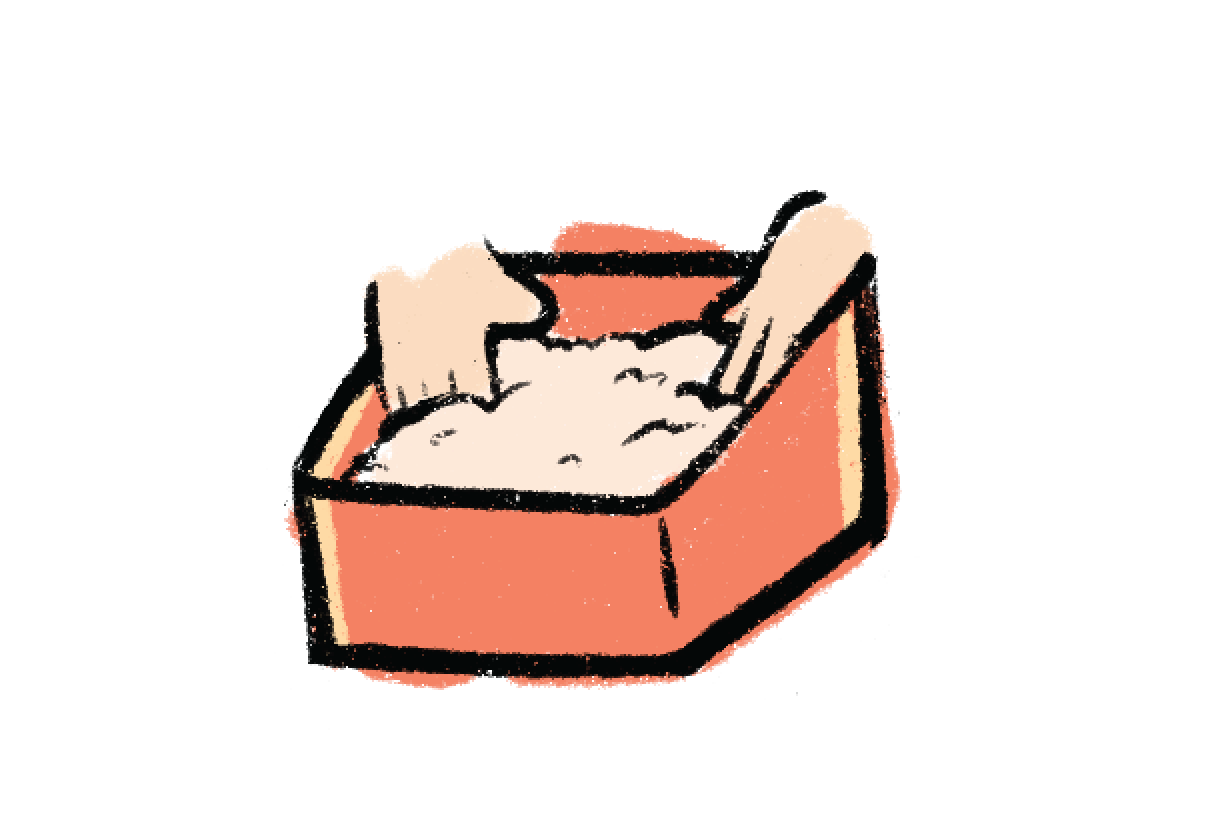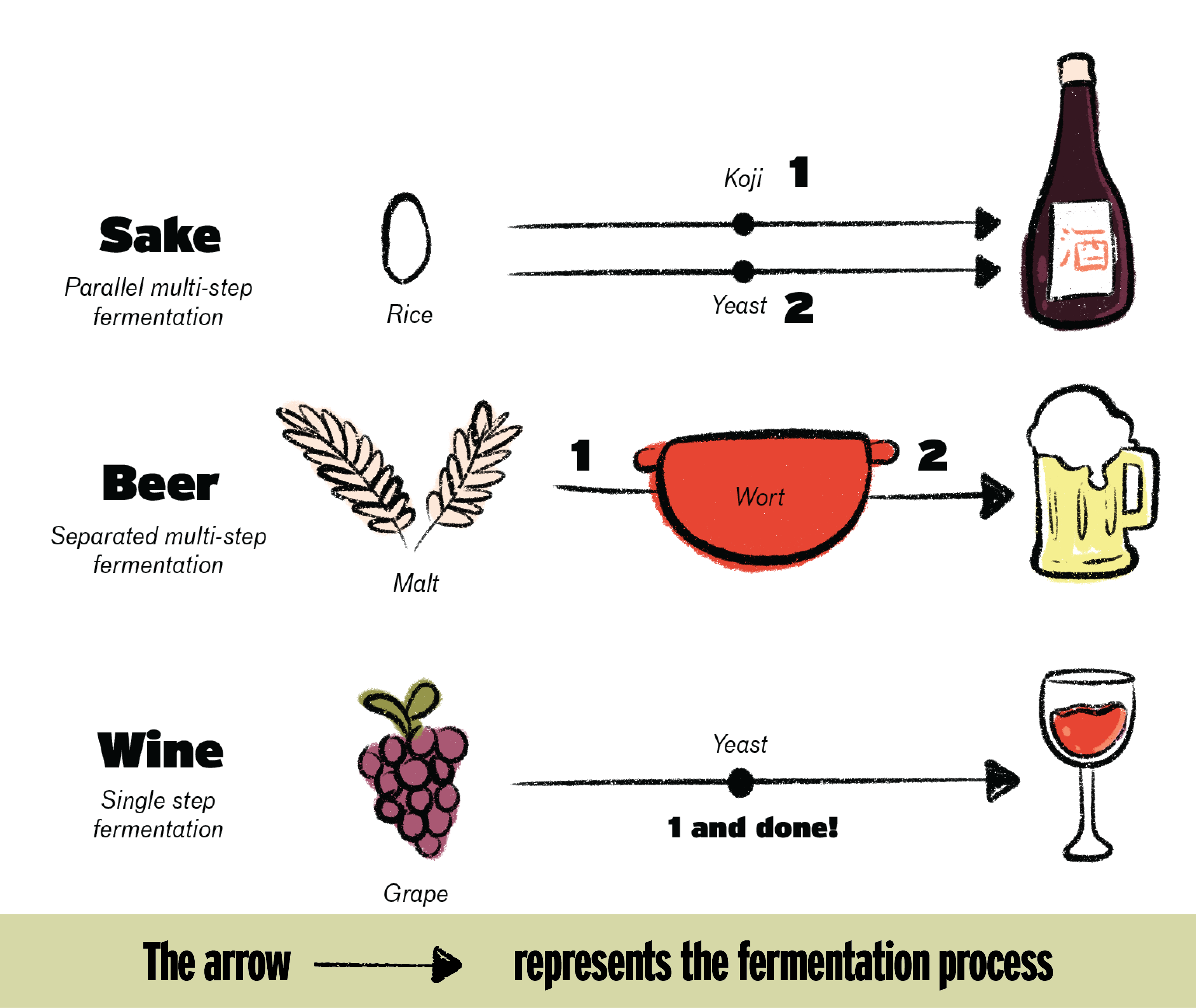

Is making sake more like wine or beer? We thought you'd never ask...
We call it rice wine. So sake must be made the same way as wine right? Harvest the rice, press it into juice, put it in a tank to ferment, age it in some oak, bottle it up and go! Not quite.
Making quality sake has a few extra steps. This is because for fermentation to occur (which is the whole point, don’t forget) sugar and yeast need to be present. And unlike grapes in winemaking, rice doesn't have immediately accessible sugar to help initiate the fermentation.
Is Sake more like Beer or Wine?--wines
This is where sake and beer actually have a few things in common; the starch needs to go through a few extra steps to be converted into fermentable sugar. So then is sake making more like brewing beer? Well no. It's got some differences there too. So can’t we let Sake making be Sake making? and stop trying to make it Wine or Beer?!

But as wine lovers, we can’t help to find parallels to the winemaking process whenever we can… so we’ll loop those in for education's sake when appropriate too.
From rice paddy to bottle, here’s the unique journey each kernel travels to present its best self to you — in the form of delicious sake.
An Overview of Sake brewing--cellar
The process of making sake begins by polishing the rice to remove the outer layers, leaving the starchy core of the grain. The rice is then washed and soaked in water before being steamed to prepare it for fermentation.
Then comes the magic ingredient, Koji, a type of mold that helps to turn the rice into a sugar feast for the yeast, who will later convert it into alcohol. So next, it's time to mix and mingle! The steamed rice is mixed with the koji and yeast, and then the party begins - fermentation!
After fermentation, the sake is pressed to separate the liquid from the solids. The liquid is then clarified and pasteurized, then bottled and ready to enjoy!
The Steps of Sake making--plum
Here’s a breakdown of each step alongthe way.

1. Rice Milling/Polishing

The first step in making sake is to mill the rice to remove the outer layers and expose the starchy centre of the grain. The amount of milling varies depending on the desired characteristics of the finished sake, but most sake is milled to a degree of 60-70%.
2. Soaking

The milled rice is soaked in water to allow it to absorb moisture and to begin the process of breaking down the starches into sugars.
3. Steaming

The soaked rice is steamed to cook it and to further break down the starches.
4. Koji-making

A portion of the steamed rice is set aside to be inoculated with a special mould called Koji (Aspergillus oryzae), which converts the rice's starches into sugars. This process is known as koji-making.
5. Mash Preparation

The remaining steamed rice, koji, and water are mixed together to form a fermented mash called moromi.
6. Fermentation
The moromi is left to ferment for one to two months, during which time the sugars are converted into alcohol.
7. Pressing

The fermented moromi is pressed to separate the sake from the solids.
8. Pasteurization

The sake is pasteurised to kill any remaining bacteria and to stabilise the sake.
9. Aging

The sake is aged for several months to allow the flavours to develop and mature.
10. Bottling

The sake is bottled and shipped to be enjoyed!
Want to take your sake brewing knowledge to the next level? Check out the How Sake is Made:Deep Dive Guide
About the Author
Meet Alex Tanner – a sommelier as versed in the world of wines as she is in outdoor adventures! From mountain peak après-ski to remote ancient woodland hike-in camping - foraging along the way - Alex believes nature's bounty truly sings when matched with the right glass of wine (...or two).
Do you know your wine personality? If your answer is no, take our quiz to find out which wines to pick up next and build your box!
Build my box





